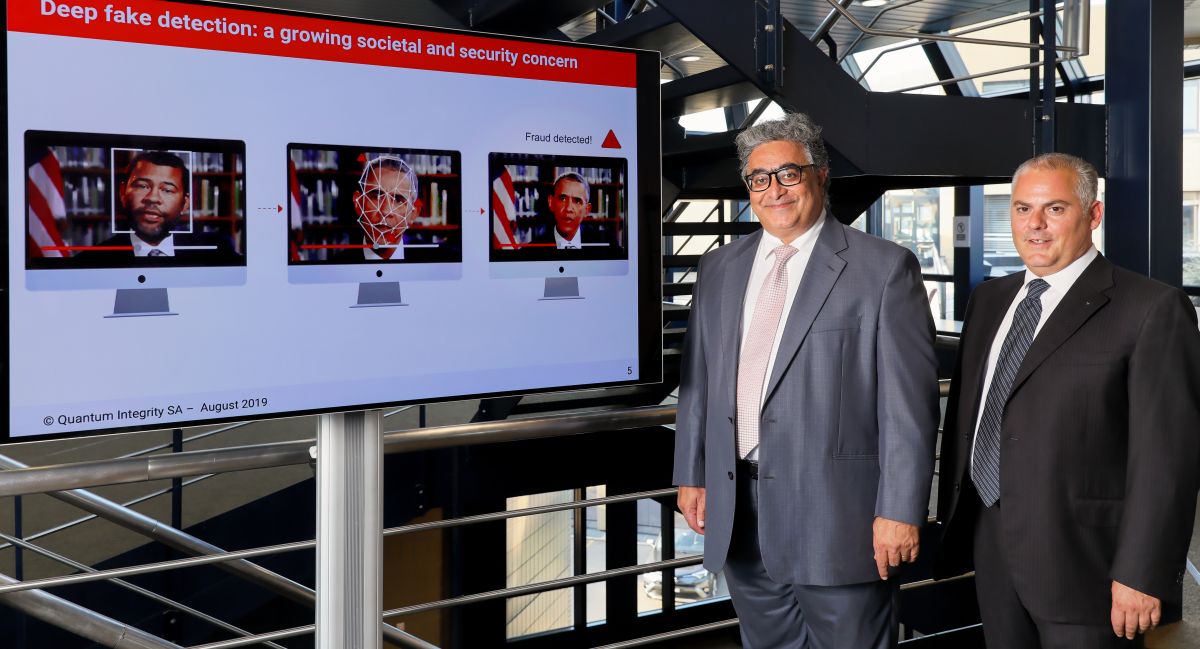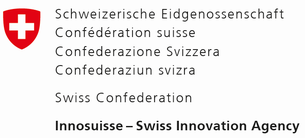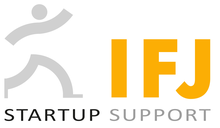
In an Innosuisse financed collaboration with EPFL, Quantum Integrity will develop a Deep Fake detector based on Deep Learning, a high stakes project for the H2020 supported venture taking on the growing use of Deep Fake images and videos costing billions to the world economy and raising future societal and political issues.
In a collaboration with EPFL, Quantum Integrity is set to develop a Deep Fake Detector. “This is a collaborative innovation project between Quantum Integrity and EPFL, co-financed by Innosuisse” explains Prof. Dr Touradj Ebrahimi, Head of its Multimedia Signal Processing Group, Convenor (chairman) of the JPEG standardization committee, and Coordinator of digital information application vertical at the newly launched Center for Digital Trust (C4DT).
The total budget of the project which is foreseen to last 12 months is roughly half a million Swiss francs, with a little bit less than 50% financed by Innosuisse – the Swiss Innovation Agency. The project will start on 1st of October 2019. Quantum Integrity and EPFL had two pilot projects together in the last two years prior to the launch of this project which was used to set the foundations of the Innosuisse-funded project.
Detecting forged images with artificial intelligence
The goal of the project is to use artificial intelligence to detect a forgery in images. Artificial intelligence is also used to create forged content similar to Deep Fake videos we often see in the press. The two AI systems are put in competition to detect forged images not only when they are produced manually or semi-automatically with the help of humans but also when fake images are produced using AI.
As Anthony Sahakian, Quantum Integrity’s CEO explains “one of the unique advantages of our project is that we will train the AI systems using real-world forged content that are put at our disposition by business partners of our company.” Another unique aspect of the solution is that it does not need to be tailored to different applications. The same architecture and solution are used to detect document forgery, insurance forgery, fake IDs, Deep Fake videos, etc. What changes are the training stage and the data fed to it? Another very important advantage of the solution is that the more it is used the better it is capable of detecting forged content and is resilient to new types of falsification because it learns when the new method to forge an image are developed.
Addressing a serious issue
Deep Fake is a very serious issue costing already billions to the world economy. In some cases, companies lose money immediately. Anthony Sahakian gives here the example of an insurance company receiving a photoshop image with a claim, asking for more damages than there actually were. In warranty management (3% of turnover in consumer electronics), warranty claims, proof of purchase docs, and warranty labels are being photoshopped. Warranty management is a USD 23 billion industry with fraud between 8 to 12 % of this. A growing number.
But the cost of Deep Fake has the potential to rise, even more, adds Prof. Dr Touradj Ebrahimi, as companies get exposed to future loss, damage and liability via false documents or images in the legal sector, false HR documents and diplomas and fake IDs in KYC (Know Your Customer) process. Damage might not be immediate, but a ticking time bomb. Last but not least, Deep Fake AI has the potential to move financial markets or start political conflicts.
The Horizon 2020 committee – the biggest EU Research and Innovation Program recognized the future societal and even national security issues of Deep Fake and granted this Summer support to Quantum Integrity to develop countermeasures. Today the startup based at EPFL Innovation Park is looking to raise a series A in 2020 and to onboard interested parties and companies for pilots. The pilot participants will be the first to benefit from the tech and it will be tailored to their use case, explains the CEO.
Photo by Alain Herzog: Touradj Ebrahimi, professor at EPFL and head of the Multimedia Signal Processing Group (left) and Anthony Sahakian, CEO Quantum Integrity.























































Please login or sign up to comment.
Commenting guidelines